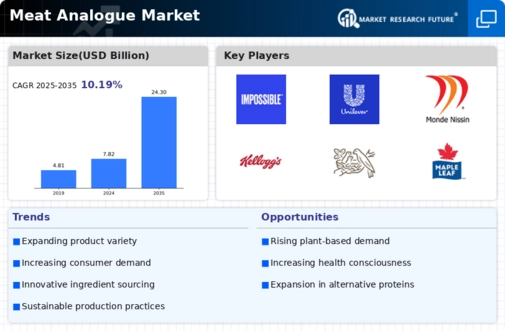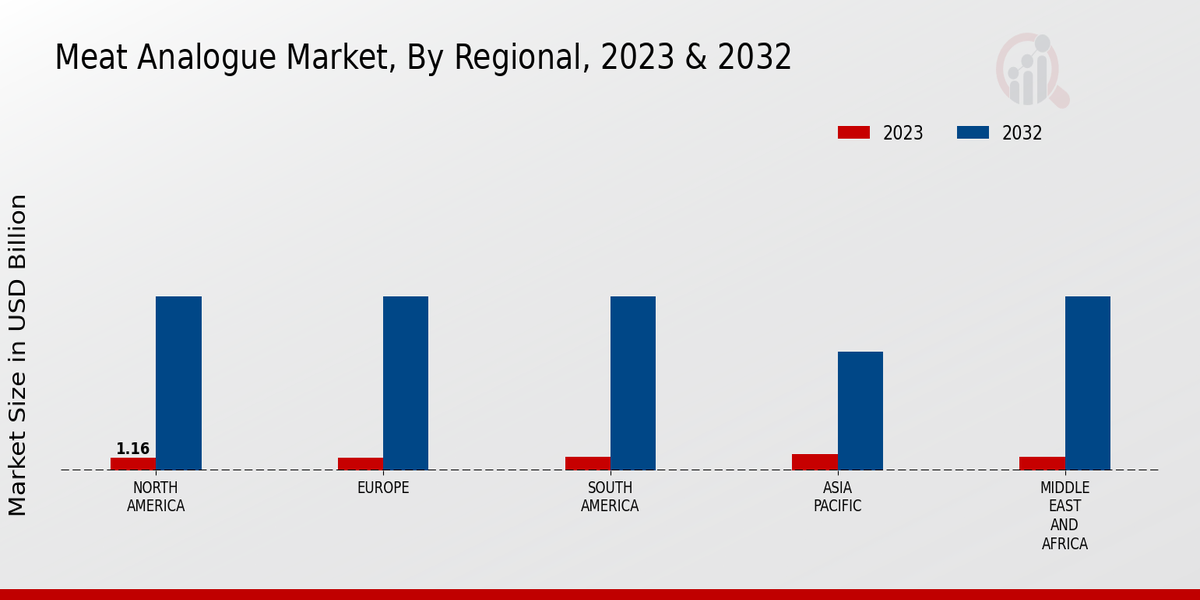Meat Analogue Market Summary
The global meat analogue market is projected to experience substantial growth from 7.82 USD billion in 2024 to 24.3 USD billion by 2035.
Key Market Trends & Highlights
Meat Analogue Key Trends and Highlights
- The market is expected to grow at a compound annual growth rate (CAGR) of 10.84% from 2025 to 2035.
- By 2035, the market valuation is anticipated to reach 24.3 USD billion, indicating a robust expansion.
- In 2024, the market is valued at 7.82 USD billion, reflecting the increasing consumer interest in meat alternatives.
- Growing adoption of plant-based diets due to health and environmental concerns is a major market driver.
Market Size & Forecast
| 2024 Market Size | 7.82 (USD Billion) |
| 2035 Market Size | 24.3 (USD Billion) |
| CAGR (2025-2035) | 10.84% |
Major Players
Impossible Foods, Unilever, Monde Nissin, Kellogg Company, Nestle, Maple Leaf Foods, Dr. Praeger's Sensible Foods, Gardein, Conagra Brands, Beyond Meat, The Hain Celestial Group, Vivera/JBST, Tofutti Brands, Tyson Foods, Amy's Kitchen














